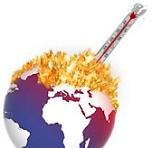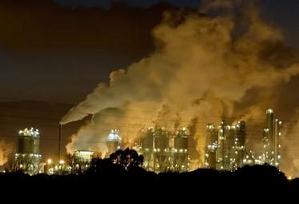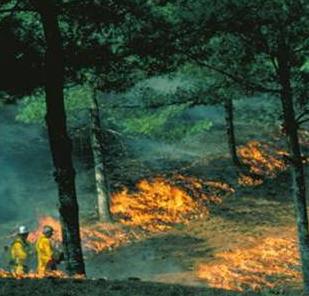
 |
GLOBAL WARMING
|
|---|
| Earth at Warmest in 400 Years. There is sufficient evidence from tree rings, boreholes, retreating glaciers, and other "proxies" of past surface temperatures to say with a high level of confidence that the last few decades of the 20th century were warmer than any comparable period in the last 400 years, according to a new report from the National Research Council. |

|
|---|
Very little confidence can be placed in statements about average global surface temperatures prior to A.D. 900 because the proxy data for that time frame are sparse, the committee added
2006 on pace to be warmest year on record in the US. The average temperature for the continental United States from January through June 2006 was the warmest first half of any year since records began in 1895, according to scientists at the National Oceanic & Atmospheric Administration's (NOAA) National Climatic Data Center (NCDC)
World temperatures highest in 1200 years. World temperatures are higher than in any period over the last 1,200 years, according to a study published in the current issue of Science. In reaching their conclusion, a research team from the University of East Anglia in Britain analyzed 14 sets of temperature records including data from rings, fossil shells, ice cores, temperature records, and historical documents from North America, Europe and East Asia.
Carbon dioxide level highest in 650,000 years. Carbon dioxide levels are now 27 percent higher than at any point in the last 650,000 years, according to research into Antarctic ice cores published on Thursday in Science. Analysis of carbon dioxide in the ancient Antarctic ice showed that at no point in the past 650,000 years did levels approach today's carbon dioxide concentrations of around 380 parts per million (ppm). |
|---|
GLOBAL WARMING
Global warming is an increase in the average temperature of Earth's surface. Since the late 1800's, the global average temperature has increased about 0.7 to 1.4 °F (0.4 to 0.8 °C). Many experts estimate that the average temperature will rise an additional 2.5 to 10.4 °F (1.4 to 5.8 °C) by 2100. That rate of increase would be much larger than most rates of past increases.
Scientists worry that human societies and natural ecosystems might not adapt to rapid climate changes. An ecosystem consists of the living organisms and physical environment in a particular area. Global warming could cause much harm, so countries throughout the world have drafted an agreement to limit it. However, that agreement, known as the Kyoto Protocol, has not yet been ratified (formally approved).
Causes of global warming
Climatologists (scientists who study climate) have analyzed the global warming that has occurred since the late 1800's. A majority of climatologists have concluded that human activities are responsible for most of the warming. Human activities contribute to global warming by enhancing Earth's natural greenhouse effect. The greenhouse effect warms Earth's surface through a complex process involving sunlight, gases, and particles in the atmosphere. Gases that trap heat in the atmosphere are known as greenhouse gases.
The main human activities that contribute to global warming are the burning of fossil fuels (coal, oil, and natural gas) and the clearing of land. Most of the burning occurs in automobiles, in factories, and in electric power plants that provide energy for houses and office buildings. The burning of fossil fuels creates carbon dioxide, whose chemical formula is CO2. CO2 is a greenhouse gas that slows the escape of heat into space. Trees and other plants remove CO2 from the air during photosynthesis, the process they use to produce food. The clearing of land contributes to the buildup of CO2 by reducing the rate at which the gas is removed from the atmosphere or by decomposition of dead vegetation.
A small number of scientists argue that the increase in greenhouse gases has not made a measurable difference in the temperature. They say that natural processes could have caused global warming. Those processes include increases in the energy emitted (given off) by the sun. But the vast majority of climatologists believe that increases in the sun's energy have contributed only slightly to recent warming.
 |
 |
|---|
|
||||||||||||||||||||||||||||
|---|---|---|---|---|---|---|---|---|---|---|---|---|---|---|---|---|---|---|---|---|---|---|---|---|---|---|---|---|
|
|
||||||||||||||||||||||||||||